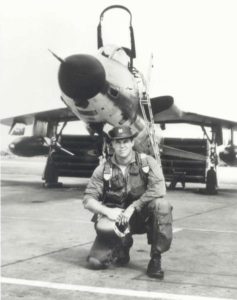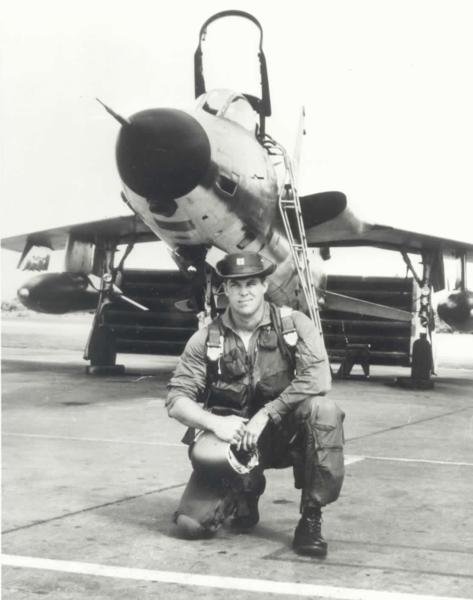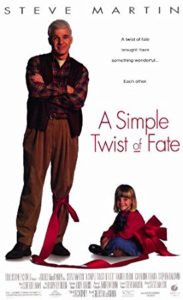 As I write this piece in the shadow of Veterans Day 2021, I think about my family members who have served in America’s Armed Forces over the decades. Their service has stretched back through American history from the Civil War through both World Wars, Korea, and Vietnam, and across multiple branches of the military including the Army, Navy, and Air Force. Growing up, I was lucky to know both of my grandfathers, one having piloted a ship in the Pacific Theater of World War II and the other having served in the Army Infantry in North Korea.
As I write this piece in the shadow of Veterans Day 2021, I think about my family members who have served in America’s Armed Forces over the decades. Their service has stretched back through American history from the Civil War through both World Wars, Korea, and Vietnam, and across multiple branches of the military including the Army, Navy, and Air Force. Growing up, I was lucky to know both of my grandfathers, one having piloted a ship in the Pacific Theater of World War II and the other having served in the Army Infantry in North Korea.
Though the conflict is more recent, I never got to meet my relative who served in the Vietnam War, my great-uncle Anthony C. Shine. I remember first learning about Anthony in the mid-1990s, and my main connection with him has been that my younger brother is named after him. Recent digging online revealed details about his life I never knew, and I’m amazed to learn what an incredible, strong, and accomplished person he was. He has truly left a legacy to be proud of.
Lieutenant Colonel Anthony C. Shine was a fighter pilot in the Vietnam War. Before that however, he was a loving husband, father, and son from a patriotic family. He was also a polio survivor. As a young child, he loved competitive sporting pursuits and above all football, and by all accounts was the sort of boy who would have been right at home in a Norman Rockwell painting. At the age of 11 he contracted polio, an illness that permanently paralyzed or killed many children who caught it, and was bed-ridden for many months. When he finally recovered Anthony was left weak with atrophied muscles, and his family was told he would never be able to hold a pencil or walk again.
From an early age therefore, Anthony developed a strength of character and determination that would be hallmarks of the rest of his life. He underwent years of grueling physical therapy and training to regain the ability to write, to walk without a limp, and to eventually become a starter on his high school’s football team and on Colgate University’s football team. He underwent muscle transplant operations to restore the use of his left thumb, but his left hand was noticeably smaller than his right. Rather than being crippled by polio, Anthony grew into an over six foot-tall force to be reckoned with.
The physical deformity in his left hand could have disqualified him from becoming an Air Force pilot, let alone a fighter pilot which has famously strict physical ability requirements. Anthony beat the odds again however, working diligently to build strength and regain full dexterity in his left hand. After joining the Air Force in 1961, Anthony was an instructor pilot for years before deploying to Vietnam. He touched many lives and encouraged his students to work harder than others thought they could, and to always persevere to achieve their goals.
During his first tour of duty in Vietnam in 1970, Anthony accompanied his brother’s remains home for burial; all four of the Shine siblings served in Vietnam, but only two would survive the war. Anthony then volunteered for a second tour. On December 2, 1972 Anthony, an Air Force Captain at the time, was piloting his A-7D fighter craft on a reconnaissance and escort mission near the Barthelemy Pass in North Vietnam. The passes through the mountains that border the Lao/Vietnamese borders were heavily concentrated with enemy missile and Anti-Aircraft Artillery sites, and therefore were frequent bombing targets. Of the many Americans lost near these passes, few returned. Search was difficult not only because the enemy was present, but also because the terrain is incredibly rugged. Anthony radioed his wingman that he was dipping below cloud cover to get a closer look at their target, and after 10 minutes of radio silence his wingman tried to contact him. Anthony never responded, and after a 3-day aerial search Anthony was declared Missing in Action. He was 33 years old, and his A-7D Corsair plane was the first of that model to be lost in the war.
Anthony’s family did not learn this level of detail for decades however, and Anthony was finally declared dead in 1980. His family never gave up the search, and were frustrated by the wall of silence they encountered from government officials. At the time he was declared MIA the US was not officially supposed to be occupying the ground or air space of Laos, having helped broker an agreement to establish a neutral and independent Laos in 1962, though both the US and North Vietnam continued to intervene secretly to back different warring factions. Since Anthony’s plane went down in northern Laos the military could not admit their presence in the area let alone mount an effective search for Shine, especially in the aftermath of the controversial Vietnam War.
After a decade and half with no answers, rumors began to filter back to the US in 1987 about plane wreckage, witnesses, and even a found helmet. While officials dismissed the claims Anthony’s daughter Colleen was galvanized, and in 1993 she travelled to Vietnam to conduct her own investigation. After renting a Russian vehicle, hiring a local guide, and learning that the area had been looted and likely wouldn’t contain any further evidence, Colleen did find her father’s crash site and even recovered his helmet with his name handwritten inside. With this new information investigators were able to conduct a fuller search of the site, eventually finding more of the missing plane, dog tags, and even Anthony’s remains in a nearby grave. His remains were returned to the US in 1995 and in 1996 were officially identified as those of Anthony Shine, who by that time had been posthumously promoted to the rank of Lt. Col.
In October 1996 my family and I travelled to Arlington National Cemetery where Anthony was interred with full honors, including four F-15 fighter aircraft executing the missing man formation directly overhead. As a child I remember the fly-over being incredibly loud. We visited the Vietnam War Memorial wall, where we found Anthony’s name marked by the MIA cross symbol. That symbol has now been filled in to the full KIA diamond shape of all the other found fallen.
If you’ve never visited the Vietnam War Memorial it’s an incredibly powerful experience seeing the names of every fallen American soldier starkly chiseled in dark stone. In my recent research I found that the memorial now hosts a website dedicated to finding photographs to accompany every soldier’s name, and it’s here that I came face to face with the larger than life Anthony C. Shine. I was also incredibly moved to see all the comments and well-wishes from so many other servicemen and their families, whose lives Anthony impacted. He’s truly a person I wish I could have known, and was taken from us far too soon. His family remained active in POW/MIA advocacy efforts and established an annual US Air Force award in Anthony’s name that is given to an outstanding pilot who is also active in their local community.
To compile this piece I relied on The Wall of Faces section of the Vietnam War Memorial website, and to meet Anthony yourself you can visit his page directly. I gathered a lot of information from a piece written by Anthony’s family, “Overcoming Incredible Odds,” excerpted from the book They Were Our Family, a sample of which can be found on the Vietnam Veterans Memorial Fund website. In addition the Military Hall of Fame website had further details about Anthony’s service, and the Fixed-Wing Air Losses in Vietnam website had further details about his crash. For more information about the Vietnam War I found the Smithsonian’s The Vietnam War: The Definitive Illustrated History and The Vietnam War by Geoffrey Ward and Ken Burns to be helpful sources.
Liz Reed is the Adult and Information Services Department Head at the Morrill Memorial Library in Norwood, MA. Look for her article in the Nov 18, 2021issue of the Transcript and Bulletin.



